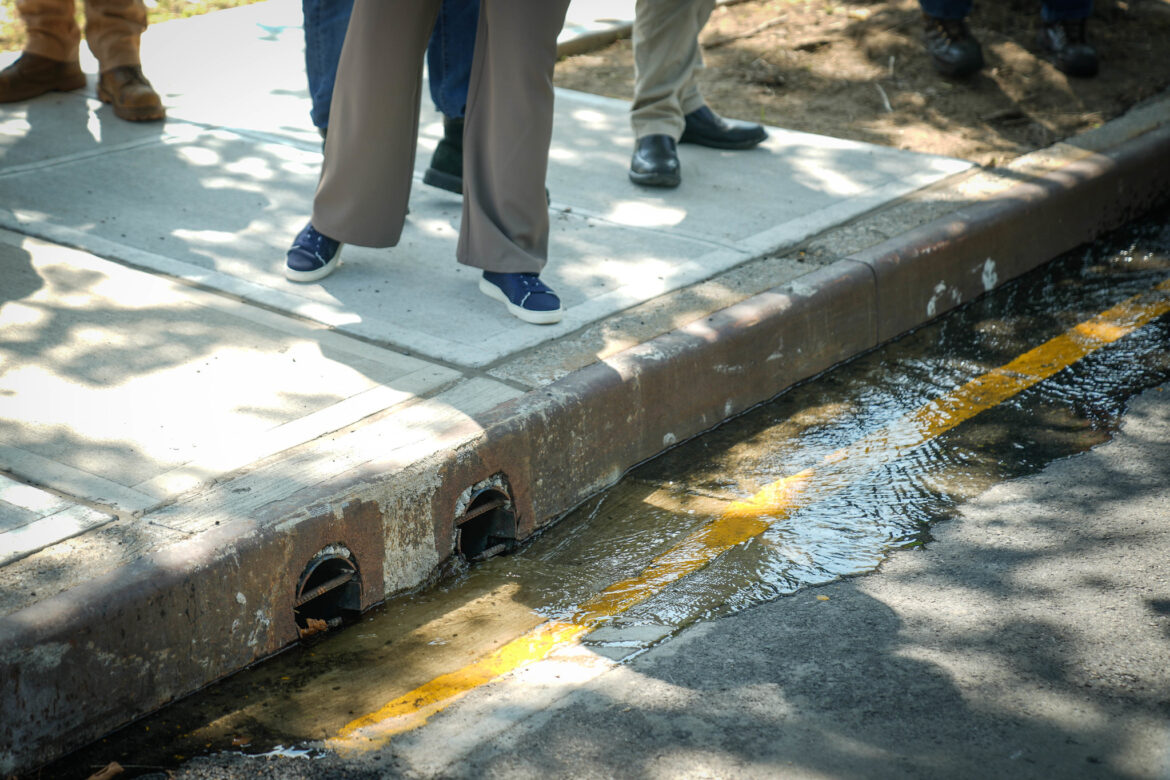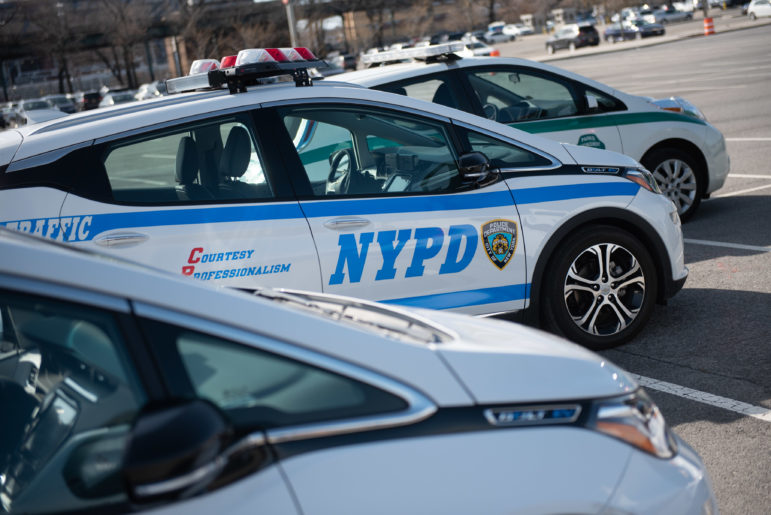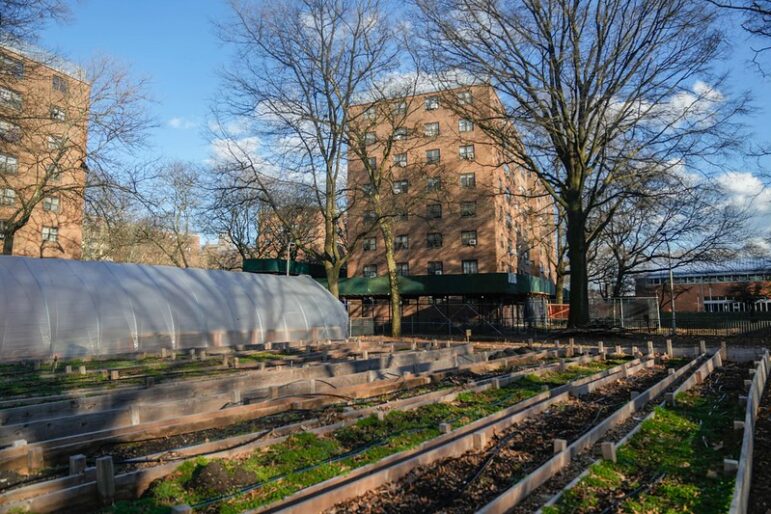The comptroller’s office says some inroads have been made but “far more is needed to be fully prepared for heavy storms.”

Benjamin Kanter/Mayoral Photo Office
Rainy weather in Manhattan in 2018.Since the news of Mayor Eric Adams federal corruption charges broke, government officials have questioned his ability to lead the city amid the turmoil.
And the city’s Comptroller Brad Lander, who is running against Adams for the mayoral seat in next year’s election, says the administration also can’t lose sight of the fact that hurricane season is underway.
Lander’s office published a fact sheet Thursday that zeros in on how prepared the city is to deal with extreme rain. The breakdown tracks the progress made on key hurricane preparedness efforts flagged in a more comprehensive report launched in April, and identified several areas for improvement.
“New Yorkers deserve a Mayoral administration that is laser focused on managing a more climate-prepared and resilient city,” Lander said in an email.
“Climate change continues to bring more and more devastating storms every hurricane season—and the City needs to improve the way it handles emergency outreach, storm operations, and resilient capital projects to be most prepared,” he noted.
June saw the earliest category five storm on record, Hurricane Beryl, make landfall in the Caribbean and bring heavy rainfall to New York.
The comptroller’s update, which spans from April to August of this year, found that only “modest progress” has been made in maintaining the city’s 153,000 catch basins or storm drains. And not enough New Yorkers, including residents in basement apartments, are getting emergency notifications when a severe storm hits.
The city has made headway, however, in spending the federal dollars it received to address the damage brought on by hurricane Sandy 12 years ago.
“But far more is needed to be fully prepared for heavy storms,” the factsheet concludes.

NYC Comptroller’s Office
Lander’s office published a fact sheet Thursday that zeros in on how prepared the city is to deal with extreme rain.Work in progress
When it comes to hurricane preparedness, the least progress has been made in replacing the specialized trucks used to unclog the litter that often makes its way into the city’s catch basins, the fact sheet notes.
These need to be cleaned regularly so they can easily drain excess rainwater during a storm.
The 51 catch basin trucks that the city has in its fleet, however, have “aged past their expected useful lives of 8-10 years,” the Comptroller’s April report highlights. The Department of Environmental Protection (DEP) is working on replacing 32 of these, and told City Limits they expect the first batch of that allotment to be delivered “likely” within the “next few weeks.”
But the comptroller’s office warns that 18 remaining trucks in the fleet still need to be replaced and that “no timeline” had been provided for those.
“It was really alarming when we found out that a huge proportion of the catch basin cleaning truck fleet was out of service. They had broken parts, were in disrepair and were just waiting to be serviced,” said Louise Yeung, chief climate officer for the comptroller.
“So with such a diminished availability of these specialized catch basin cleaning trucks, It really begs the question of whether the city can actually clean those catch basins effectively in time for the next storm,” she added.
To top it off, since April, the DEP only replaced 3.2 percent of the catch basins that needed to be swapped out, according to the report. In total, that’s 48 out of 1,500 that the comptroller’s office flagged as needing replacement.
The report also says that only 6.7 percent of catch basins that required new hardware, or 131 out of 1,927, got those replacements.
DEP, however, rebutted these claims, underscoring in an email that “less than 2 percent of the catch basins citywide need to be replaced, and a similar number require hardware upgrades.”
“Any catch basin that needs to be cleaned is in fact cleaned,” a DEP spokesperson said in an email.

Michael Appleton/Mayoral Photography Office
A storm drain in Queens.The department also notes that “catch basin maintenance as well as storm preparations are performed year-round” highlighting that they partner with other agencies to follow a city-wide flash flood emergency plan and evaluate chronic flooding locations annually.
But functioning catch basins aren’t the only problem flagged by the comptroller’s office. They claim not enough New Yorkers are being notified when severe storms hit.
To get text or email alerts from the city about when a storm is on its way, New Yorkers can subscribe to Notify NYC. After signing up, users can opt to receive “basement alerts” that notify those who live in basement apartments, which are typically prone to flooding, about potentially life-threatening weather conditions.
There are over 1.2 million New Yorkers enrolled in the alert system, which Yeung warns is just “a drop in the bucket” considering the Big Apple’s adult population is almost 7 million people. Between April and August, NotifyNYC subscribers have only increased by 2.7 percent.
The New York City Emergency Management Department (NYCEM), which helps handle weather emergencies, doubled the number of people enrolled in basement alerts from 2,387 subscribers to 5,147 subscribers. But that still only makes up 1 to 2 percent of the estimated number of basement residents, the comptroller’s office notes.
A NYCEM spokesperson noted in an email that they rely “on multiple resources to inform New Yorkers of potential impacts for all emergencies.” These include agency partners, elected officials, community organizations and a volunteer group of over 700 members who help inform communities when a weather crisis is at large.
Still, environmental groups like We Act that have come up with their own plan to warn folks about what to do during an emergency say more could be done. Passing out emergency kits with tools like first aid supplies, hand crank radios and flashlights, as well as being more strategic about community partnerships the city makes, could go a long way.
“I think the information that the city has created to prepare people for storms and extreme rain events are really not permeating out into the community at the levels that it needs,” said Annie Carforo, the climate justice campaigns manager at WE ACT.
Still, there is some good news. The comptroller’s report found that improvements have been made on spending the federal dollars that poured in to fortify the city from storms after Hurricane Sandy tore through the Big Apple in 2012.
Of the money that came from the Federal Emergency Management Agency (FEMA), 75 percent has been spent, up from 66 percent in 2022.
And better yet, 97 percent of the funds that came from the disaster recovery program at the Department of Housing and Urban Development (HUD) has been invested.
The city’s Chief Climate Officer, Rohit Aggarwala, underscored in an email that billions have been invested since hurricane Sandy to prepare the city to weather another massive storm. But admitted that “even with this, the work is far from complete.”
“The good news is that we have also invested huge amounts of money in resilience—which is not about preventing flooding but ensuring that we can withstand and bounce back from it,” Aggarwala said.
To reach the reporter behind this story, contact Mariana@citylimits.org. To reach the editor, contact Jeanmarie@citylimits.org
Want to republish this story? Find City Limits’ reprint policy here.








